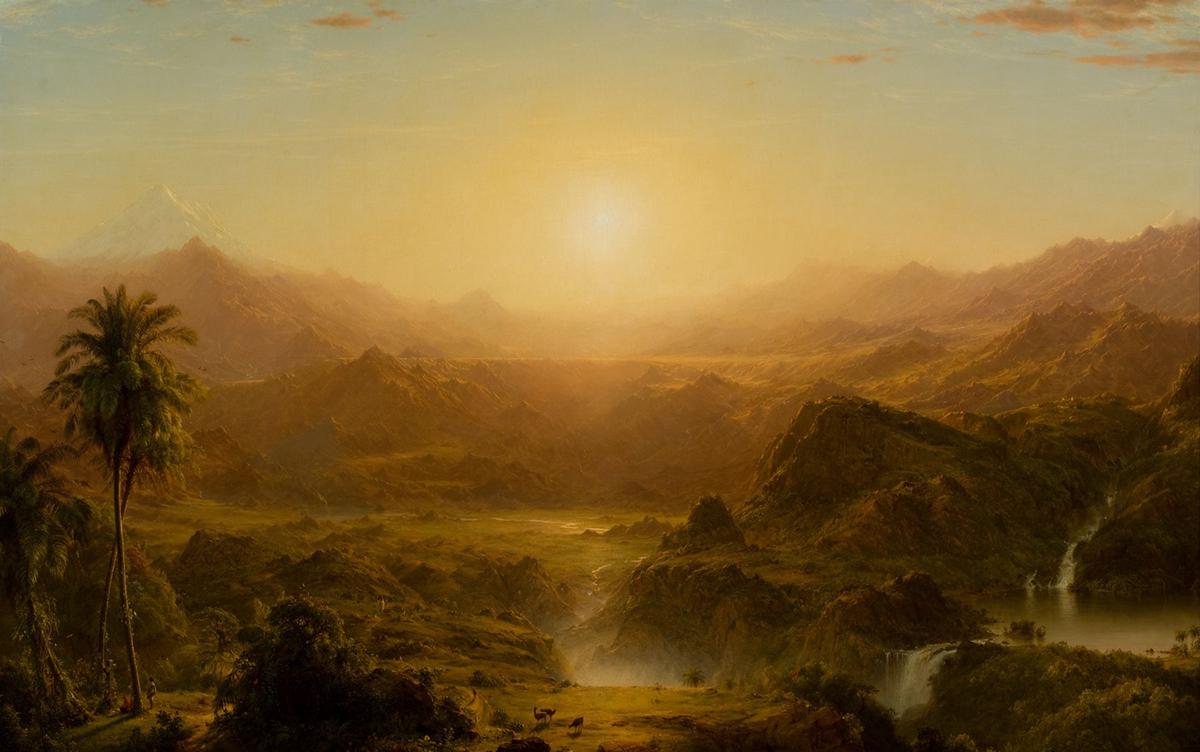Frederic Edwin Church's artistic journey showcases the impact of mentorship, travel, and passion for nature. Influenced by Thomas Cole and his own experiences, Church's work vividly portrays landscapes that captivate both visually and emotionally.
Influence of Thomas Cole
Thomas Cole's mentorship left a lasting mark on Frederic Edwin Church's artistic development. Under Cole's guidance, Church honed his skills in capturing the details of the natural world, mastering the use of light and shadow to create emotive scenes.
Cole introduced Church to the power of panoramic views and scale, inspiring works like "Niagara" that make viewers feel immersed in the landscape. Church didn't merely imitate Cole's style; he built upon it, incorporating his own experiences and the vibrant colors he encountered during his travels to South America.
The relationship between Cole and Church set the stage for future generations of artists, demonstrating how mentorship can shape and elevate artistic vision.
Use of Light and Shadow
Church's mastery of light and shadow transformed his paintings into emotional narratives. He used light to guide the viewer's gaze and create depth, while shadows added mystery and intrigue. This interplay allowed Church to craft landscapes that felt both expansive and intimate.
In "The Heart of the Andes," Church's use of light creates a sense of warmth on the mountaintops, contrasting with cooler, shadowed valleys below. This technique not only adds visual interest but also evokes an emotional response from the viewer.
Church's ability to manipulate light and shadow is particularly evident in "Niagara Falls," where the interplay between illumination and darkness enhances the power and mystery of the cascading water. Through this mastery, Church invites viewers to step into his painted worlds, making each viewing a personal journey.
Detailing and Realism
Church's commitment to detail and realism was central to his artistic approach. He meticulously captured the intricacies of nature, from the veins of a leaf to the play of sunlight on water. This attention to detail made his landscapes come alive, allowing viewers to feel immersed in the scenes.
Church's process often began with outdoor sketches, capturing the raw beauty of nature firsthand. He then used a grid technique to transfer these studies onto larger canvases, ensuring accuracy in his final works. This method allowed him to create paintings that retained their coherence and detail even under close scrutiny.
The result of Church's dedication to realism was a body of work that blended fantasy and reality, inviting viewers to explore each painting's many layers and discover new details with every viewing.
Color Palette and Emotional Impact
Church's use of color was a powerful tool for conveying emotion and capturing the essence of diverse landscapes. His travels enriched his palette, allowing him to accurately depict scenes from South America to the Arctic.
- In "The Heart of the Andes," lush greens and warm browns capture the vibrancy of South American jungles and sun-baked cliffs.
- "Aurora Borealis" showcases Church's ability to render the ethereal quality of Arctic skies through a dance of greens, blues, and purples.
Church also masterfully used subtler color palettes to evoke different moods. "Twilight in the Wilderness" employs soft purples and blues to create a sense of tranquility and reflection as day fades into night.
Through his thoughtful use of color, Church transformed each painting into a story, inviting viewers to not just see but feel the landscapes he depicted.
Travel and Artistic Evolution
Church's extensive travels played a crucial role in shaping his artistic vision. Each journey exposed him to new landscapes, cultures, and color palettes, enriching his work and pushing his technical skills to new heights.
- His South American expeditions inspired works like "The Heart of the Andes," capturing the region's lush vibrancy and grandeur.
- Church's Arctic adventures led to paintings like "Aurora Borealis," which convey the stark beauty and mystical atmosphere of the frozen north.
- Explorations in the Middle East introduced architectural elements and desert vistas to Church's repertoire, as seen in his depictions of Petra and Byzantine structures.
These diverse experiences allowed Church to offer viewers not just landscapes, but windows into different worlds and cultures.
Through his travels, Church evolved from a painter of landscapes to a storyteller, capturing the essence of each place he visited and inviting viewers to explore the world through his eyes.

Frederic Edwin Church's enduring legacy lies in his ability to transform experiences into emotionally resonant landscapes. His art continues to captivate viewers, offering a unique perspective on the beauty and complexity of the natural world.
- Raab J. Frederic Church, The Art and Science of Detail. Yale University Press; 2015.
- Barringer T. Church and Constable: A Tale of Two Artists. Oxford Art Journal. 2016;39(2):215-235.
- Avery K. Church's Great Picture: The Heart of the Andes. Metropolitan Museum Journal. 1993;28:261-280.






















